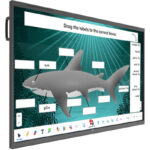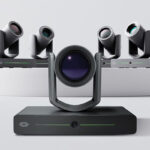InfoComm 2017 represented a record-breaking year for InfoComm International, highlighted by an all-time attendance high of 44,077 registrants from all 50 states and 117 countries overall.
The show’s growth in recent years has some long-time attendees calling for InfoComm to add a fourth day to the event, among other changes they say will help keep attendance among integrators high in the future.
As someone who went to the Integrated Systems Europe show in February, and someone who came home from Orlando with blisters on both feet from the frenetic pace at InfoComm 2017 (and a poor choice in footwear), I can definitely see the value of adding another day to the show.
And there definitely seems to be some appetite for it among long-time InfoComm show attendees who find their time more limited than ever by social engagements and rekindling business connections at the show. [related]
The record-setting crowd included almost 40 percent first-timers, who canvassed more than 950 exhibitors in 545,000 square feet of space. Giving newcomers more time to spend experiencing all InfoComm has to offer at its annual show can only serve to increase their understanding of what integrators do, how manufacturers help them and why the industry has value.
Brock McGinnis of Westbury National called a four-day InfoComm show “inevitable” in a Twitter discussion among several longtime InfoComm show attendees. But adding a fourth day involves weighing many considerations as InfoComm officials will tell you. Even in the aftermath of record attendance and more than 40 percent of the audience identifying themselves as tech managers or end users, it’s not a simple decision.
A four day show is inevitable. One of which should be VIP: (pre-arranged customer tours) only. No tirekickers. #InfoComm17 #AVTweeps https://t.co/SLGqN3A3DX
— Brock McGinnis (@brockmcginnis) June 19, 2017
InfoComm International director of communications Brad Grimes expects the organization to “evaluate our options and do what we believe is best for the InfoComm show, the industry, and the market for AV solutions.”
Grimes expects show leadership to continue discussions with “our industry committees, exhibitors, and attendee groups” about the future of the annual June event, which returns to Las Vegas in 2018, and myriad other topics.
InfoComm senior VP of expositions Jason McGraw called InfoComm 2017 “a watershed year” for the event in a press release announcing the attendance record. The show “offered new and different experiences,” he said, including the TIDE Conference, Center Stage, The Park and the Immersive Technology Experience.
InfoComm 2018 will feature workshops, session and a dedicated area “spotlighting smart building, smart home, mobile, security and related audiovisual solutions that create integrated experiences wherever people use technology.”
If it happens, adding a fourth day would obviously put more burden on manufacturers who’d be asked to set up the show a day earlier, and then there’s the perennial issue of the annual last-day drop in trade show attendance when exhibitors see a fraction of the traffic of the first day of any large event.
But giving attendees another day to immerse themselves in the newest technology trends and learn more about the industry and how they can bring more value to it certainly helps nudge things more in favor of an expanded agenda in the future.
Changing Face of Industry Trade Shows
Malissa Dillman, market development manager at Starin Marketing, wondered on Twitter what the increase in end users and tech managers at InfoComm 2017 means for the industry and for the show itself in the future.
What does this say about the industry? https://t.co/07KUjHQQV6
— Malissa Dillman (@MalissaDillman) June 17, 2017
Despite record-breaking attendance, Cenero’s Harry Meade tweeted his opinion that “integrators are getting less and less from the show.” Indulging that opinion, is there anything InfoComm International should do to change its approach, especially given it’s now attracting its audience from more backgrounds than ever before? Could a fourth day help bring Meade and others who agree with him more value?
It says integrators are getting less and less from the show. I use the show to keep up with friends and business contacts.
— Harry Meade (@AVGrump) June 17, 2017
In the Twitter exchange, Grimes said he sees the increase in end users and tech managers as a positive for all involved with InfoComm’s annual showcase. Maybe adding a fourth day to the InfoComm show could mean even more chances for integrators and end users to connect and talk about new opportunities.
It says there is great demand for what the industry offers and customers with budget are eager to come explore.
— Brad Grimes (@BGrimesDC) June 17, 2017
Managing Your Time
Josh Srago of TEECOM says it’s tough to balance teaching classes at InfoComm, volunteering for InfoComm committees and making your way around the trade show floor in three days.
This math sounds like what I was saying. If you do any volunteering/teaching, or get pulled away to talk to clients at home – fewer hours.
— Josh Srago, CTS (@JSrago) June 19, 2017
Dillman sees Integrated Systems Europe increasingly becoming the show where manufacturers launch their new products — a premise that CI has explored — and the regional shows serving as the hub for educational opportunities. It’s hard to touch InfoComm 2017 and its successors’ role as a the industry’s best annual networking opportunity.
ISE seems to be the show where new products are announced. Regional shows seem to be where education is happening
— Malissa Dillman (@MalissaDillman) June 17, 2017
Grimes says more than 3,700 InfoComm 2017 attendees took at least one class, up about 24 percent from last year to set another new record, and 190 attendees earned or renewed their Certified Technology Specialist status. Could those numbers increase even more with another full day added to the show?
McGinnis argues more opportunities for education means more end users at the show.
Education is bringing the end user numbers up big time – even if they aren’t left with enough time on the show floor. https://t.co/6udBVDYF1t
— Brock McGinnis (@brockmcginnis) June 18, 2017
InfoComm officials are happy with the growth of the show, says Grimes, and he says the satisfaction of attendees comes through in the numbers.
“The channel makes up the majority of InfoComm attendees, but we are pleased to see a growing number of the channel’s end customers engaging with the industry,” says Grimes. “Regional and local shows are very good for the industry, but we believe—and 44,000-plus registered attendees in 2017 agree—that the June show provides a unique opportunity to access everything professionals tell us they’re looking for in one place: exposure to new and current technology, training and education, professional development, networking opportunities, business opportunity, thought leadership, and fun.”
[inpagepromo]
InfoComm executive director and CEO David Labuskes said he left Orlando “inspired” by the conversations he had with attendees at this year’s show. It should be fun to watch how that inspiration shapes InfoComm 2018 in Las Vegas and the direction the organization takes in the future.
“As we build greater awareness of the magic of AV, we believe the InfoComm show will continue to draw more and different market participants, from content creators to enterprise decision-makers. InfoComm 2017 has proven to be a significant step in that direction,” he said.










